Complete Guide to Foundational Vector Operations: Addition, Scaling, and More
Introduction to Vector Operations Fundamentals
Vector operations are essential tools in mathematics, physics, and engineering that allow for the manipulation and analysis of vectors in multidimensional space. The fundamental operations include addition, which combines two vectors to produce a new one; subtraction, which determines the difference between vectors; and scalar multiplication, which scales a vector by a numerical factor. Mastering these operations is crucial for understanding more complex concepts such as vector spaces, transformations, and applications in real-world scenarios like force analysis and motion dynamics.
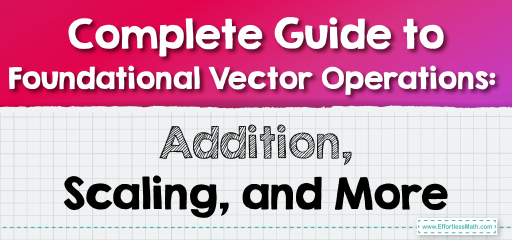
Building on the fundamentals, vector addition combines two vectors by placing them tail-to-head, resulting in a new vector that represents their cumulative effect. Subtraction involves reversing the direction of one vector and then adding it to the other, effectively finding the difference between them. Scalar multiplication stretches or shrinks a vector by a numerical factor, altering its magnitude while maintaining its direction. These operations are foundational for analyzing forces, movements, and other multidimensional phenomena.
Mathematical Operations on Vectors
Vector operations are essential for manipulating and analyzing vectors in multidimensional space. The fundamental operations include addition, subtraction, and scalar multiplication.
Vector Addition
Given two vectors \( \mathbf{a} = \langle a_1, a_2 \rangle \) and \( \mathbf{b} = \langle b_1, b_2 \rangle \),
\([
\mathbf{a} + \mathbf{b} = \langle a_1 + b_1, a_2 + b_2 \rangle
]\)
This operation combines corresponding components of the vectors to produce a new vector.
Vector Subtraction
Given two vectors \( \mathbf{a} = \langle a_1, a_2 \rangle \) and \( \mathbf{b} = \langle b_1, b_2 \rangle \),
\([
\mathbf{a} – \mathbf{b} = \langle a_1 – b_1, a_2 – b_2 \rangle
]\)
Subtraction finds the difference between corresponding components, resulting in a new vector.
Scalar Multiplication
Given a scalar \( c \) and a vector \( \mathbf{a} = \langle a_1, a_2 \rangle \),
\([
c \cdot \mathbf{a} = \langle c \cdot a_1, c \cdot a_2 \rangle
]\)
This operation scales each component of the vector by the scalar \( c \), altering its magnitude while maintaining its direction.
Example
Consider vectors \( \mathbf{u} = \langle 3, 4 \rangle \) and \( \mathbf{v} = \langle 1, 2 \rangle \), and scalar \( k = 2 \).
- Addition:
\([
\mathbf{u} + \mathbf{v} = \langle 3 + 1, 4 + 2 \rangle = \langle 4, 6 \rangle
]\)
- Subtraction:
\([
\mathbf{u} – \mathbf{v} = \langle 3 – 1, 4 – 2 \rangle = \langle 2, 2 \rangle
]\)
- Scalar Multiplication:
\([
k \cdot \mathbf{u} = 2 \cdot \langle 3, 4 \rangle = \langle 6, 8 \rangle
]\)
These operations are foundational for more advanced vector analyses and applications in various scientific and engineering fields.
Frequently Asked Questions
How do you add and subtract mixed fractions?
To add or subtract mixed fractions, start by converting each mixed fraction into an improper fraction where the numerator (top number) is greater than the denominator (bottom number). For addition, align the fractions to have a common denominator if they do not already, then simply add the numerators while keeping the denominator the same. For subtraction, follow the same process but subtract the smaller numerator from the larger one. Finally, simplify the fraction if possible, and convert back to a mixed number if needed. While this process might seem challenging, it’s similar to vector addition and subtraction, where components are aligned and combined following specific rules.
How do you add and subtract decimals?
Adding and subtracting decimals can be straightforward if you align the decimal points and apply the traditional methods of addition and subtraction. Start by writing the numbers so that the decimals line up vertically; this may involve adding zeros to some numbers to ensure each number has the same number of decimal places. When adding, simply proceed as with whole numbers, moving from right to left and carrying over as necessary. For subtraction, subtract as usual and borrow if needed. This process is similar to other basic arithmetic operations, as discussed in our guide on basic arithmetic operations.
How do you multiply fractions?
To multiply fractions, start by multiplying the numerators (the top numbers) of the fractions to get the new numerator. Next, multiply the denominators (the bottom numbers) to get the new denominator. Simplify the resulting fraction if possible by dividing the numerator and the denominator by their greatest common factor. This operation is foundational in understanding more complex vector operations, as vectors often involve fractions in calculations. While this guide focuses on vector operations, you can find more detailed examples and practice on multiplying fractions on our fraction operations page.
Related to This Article
More math articles
- Full-Length GRE Math Practice Test
- Top 10 8th Grade MAP Math Practice Questions
- Grade 3 Math: Multiplication Facts (6-10)
- How to Write an Exponential Function: Word Problems
- ASVAB Math-Test Day Tips
- Billionaire Basics: How to Master Addition and Subtraction of Massive Whole Numbers
- 3rd Grade PARCC Math FREE Sample Practice Questions
- How to Unravel the Vectorial Realm: A Comprehensive Guide to Vector Applications in Mathematics”
- The Ultimate Praxis Algebra 1 (5162) Course (+FREE Worksheets)
- How to Graph Transformation on the Coordinate Plane: Reflection?





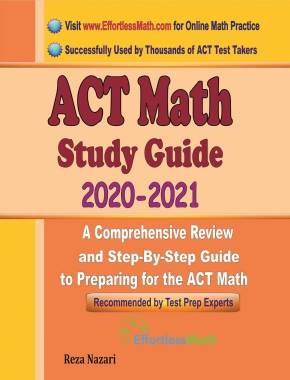


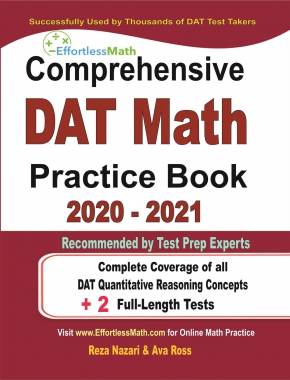



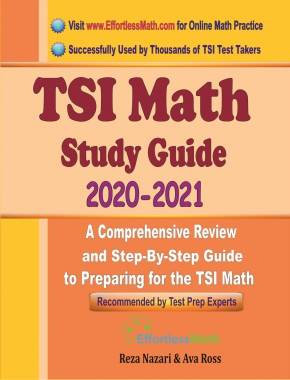









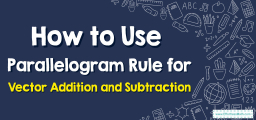




What people say about "Complete Guide to Foundational Vector Operations: Addition, Scaling, and More - Effortless Math: We Help Students Learn to LOVE Mathematics"?
No one replied yet.